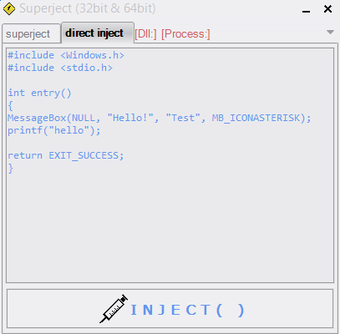What are a Superject 32 Bit & 64 Bit Dll Injector?
Screenshots
A Superject32 is a type of dynamic link library, or if for short, that allows various programs to be used with different types of operating systems, from the most basic MS Windows to the most sophisticated Sun Microsystems. Essentially it's the one tool in the arsenal that allows software to be compiled or packaged to run on different platforms. A variety of problems can arise when trying to use such a lib, so much so that often times the simplest solution can be more trouble than it's worth, especially if a user is still using the Windows operating system. However, with a good dynamic link library injector this problem is easily solved and troubleshooting should be a snap!
Now how does a Dynamic Link Library operate? Simply put, an application or a program needs to "link" with a Dynamic Link Library in order to use its features. The easiest way to do this is to use shared static or dynamic library values which are a type of shared object. Shared static dll files allow multiple applications to share the same information located within the shared library, allowing for greater efficiency on the system's part because one application won't have to search through every shared static library on the system in order to locate a particular function or feature. This saves a great deal of time and it will also prevent system crashes due to multiple shared static values being used at once.
On the other hand, a Dynamic Link Library injects dynamic code into a dynamically linked application without requiring recompiling or linking individually. Thus it solves many of the problems associated with static shared libraries but also has its own set of issues and pitfalls. One example of one issue is that the injected dynamic code could change how the application is structured on startup which could cause unexpected behavior and errors in the long run. Superject however easily prevents this by keeping a backup copy of every dynamic library file it uses so that any changes can be undone with a simple restart of the application.

